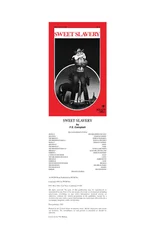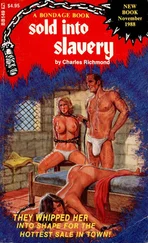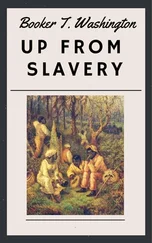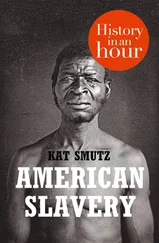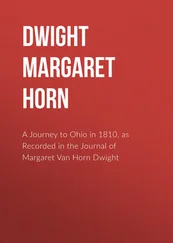Theodore Dwight Weld - American Slavery as It is - Testimonies
Здесь есть возможность читать онлайн «Theodore Dwight Weld - American Slavery as It is - Testimonies» — ознакомительный отрывок электронной книги совершенно бесплатно, а после прочтения отрывка купить полную версию. В некоторых случаях можно слушать аудио, скачать через торрент в формате fb2 и присутствует краткое содержание. Жанр: unrecognised, на английском языке. Описание произведения, (предисловие) а так же отзывы посетителей доступны на портале библиотеки ЛибКат.
- Название:American Slavery as It is: Testimonies
- Автор:
- Жанр:
- Год:неизвестен
- ISBN:нет данных
- Рейтинг книги:4 / 5. Голосов: 1
-
Избранное:Добавить в избранное
- Отзывы:
-
Ваша оценка:
- 80
- 1
- 2
- 3
- 4
- 5
American Slavery as It is: Testimonies: краткое содержание, описание и аннотация
Предлагаем к чтению аннотацию, описание, краткое содержание или предисловие (зависит от того, что написал сам автор книги «American Slavery as It is: Testimonies»). Если вы не нашли необходимую информацию о книге — напишите в комментариях, мы постараемся отыскать её.
"American Slavery As It Is" is a book composed of first-hand accounts of slavery and its horrors. The work focuses on the afflictions that slaves faced, covering their diet, clothing, housing, and working conditions. Harriet Beecher Stowe used «American Slavery As It Is» as the direct inspiration for her novel, Uncle Tom's Cabin.
American Slavery as It is: Testimonies — читать онлайн ознакомительный отрывок
Ниже представлен текст книги, разбитый по страницам. Система сохранения места последней прочитанной страницы, позволяет с удобством читать онлайн бесплатно книгу «American Slavery as It is: Testimonies», без необходимости каждый раз заново искать на чём Вы остановились. Поставьте закладку, и сможете в любой момент перейти на страницу, на которой закончили чтение.
Интервал:
Закладка:
"Most of the slaves in these counties are miserably clad I have known slaves who went without shoes all winter, perfectly barefoot. The feet of many of them are frozen. As a general fact the planters do not serve out to their slaves, drawers, or any under clothing, or vests, or overcoats. Slaves sometimes, by working at night and on Sundays, get better things than their masters serve to them.
"Whilst these things are true of field-hands, it is also true that many slaveholders clothe their waiters and coachmen like gentlemen. I do not think there is any difference between the slaves of professing Christians and others; at all events, it is so small as to be scarcely noticeable.
"I have seen men and women at work in the field more than half naked: and more than once in passing, when the overseer was not near, they would stop and draw round them a tattered coat or some ribbons of a skirt to hide their nakedness and shame from the stranger's eye."
Mr. GEORGE W. WESTGATE, a member of the Congregational Church in Quincy, Illinois, who has spent the larger part of twelve years navigating the rivers of the south-western slave states with keel boats, as a trader, gives the following testimony as to the clothing and lodging of the slaves.
"In Lower Tennessee, Mississippi and Louisiana, the clothing of the slaves is wretchedly poor; and grows worse as you go south, in the order of the states I have named. The only material is cotton bagging, i. e. bagging in which cotton is baled, not bagging made of cotton. In Louisiana, especially in the lower country, I have frequently seen them with nothing but a tattered coat, not sufficient to hide their nakedness. In winter their clothing seldom serves the purpose of comfort, and frequently not even of decent covering. In Louisiana the planters never think of serving out shoes to slaves. In Mississippi they give one pair a year generally. I never saw or heard of an instance of masters allowing them stockings. A small poor blanket is generally the only bed-clothing, and this they frequently wear in the field when they have not sufficient clothing to hide their nakedness or to keep them warm. Their manner of sleeping varies with the season. In hot weather they stretch themselves anywhere and sleep. As it becomes cool they roll themselves in their blankets, and lay scattered about the cabin. In cold weather they nestle together with their feet towards the fire, promiscuously. As a general fact the earth is their only floor and bed--not one in ten have anything like a bedstead, and then it is a mere bunk put up by themselves."
Mr. GEORGE A. AVERY, an elder in the fourth Congregational Church, Rochester, N. Y., who spent four years in Virginia, says, "The slave children, very commonly of both sexes, up to the ages of eight and ten years, and I think in some instances beyond this age, go in a state of disgusting nudity. I have often seen them with their tow shirt (their only article of summer clothing) which, to all human appearance, had not been taken off from the time it was first put on, worn off from the bottom upwards, shred by shred, until nothing remained but the straps which passed over their shoulders, and the less exposed portions extending a very little way below the arms, leaving the principal part of the chest, as well as the limbs, entirely uncovered."
SAMUEL ELLISON, a member of the Society of Friends, formerly of Southampton Co., Virginia, now of Marlborough, Stark Co., Ohio, says, "I knew a Methodist who was the owner of a number of slaves. The children of both sexes, be longing to him, under twelve years of age, were entirely destitute of clothing. I have seen an old man compelled to labor in the fields, not having rags enough to cover his nakedness."
REV. H. LYMAN, late pastor of the Free Presbyterian Church, in Buffalo, N. Y., in describing a tour down and up the Mississippi river in the winter of 1832-3, says, "At the wood yards where the boats stop, it is not uncommon to see female slaves employed in carrying wood. Their dress which was quite uniform was provided with out any reference to comfort. They had no covering for their heads; the stuff which constituted the outer garment was sackcloth, similar to that in which brown domestic goods are done up. It was then December, and I thought that in such a dress, and being as they were, without stockings, they must suffer from the cold."
Mr. Benjamin Clendenon, Colerain, Lancaster Co., Pa., a member of the Society of Friends, in a recent letter describing a short tour through the northern part of Maryland in the winter of 1836, thus speaks of a place a few miles from Chestertown. "About this place there were a number of slaves; very few, if any, had either stockings or shoes; the weather was intensely cold, and the ground covered with snow."
The late Major Stoddard of the United States' artillery, who took possession of Louisiana for the U. S. government, under the cession of 1804, published a book entitled "Sketches of Louisiana," in which, speaking of the planters of Lower Louisiana, he says, "Few of them allow any clothing to their slaves."
The following is an extract from the Will of the late celebrated John Randolph of Virginia.
"To my old and faithful servants, Essex and his wife Hetty, I give and bequeath a pair of strong shoes, a suit of clothes and a blanket each, to be paid them annually; also an annual hat to Essex."
No Virginia slaveholder has ever had a better name as a "kind master," and "good provider" for his slaves, than John Randolph. Essex and Hetty were favorite servants, and the memory of the long uncompensated services of those "old and faithful servants," seems to have touched their master's heart. Now as this master was John Randolph, and as those servants were "faithful," and favorite servants, advanced in years, and worn out in his service, and as their allowance was, in their master's eyes, of sufficient moment to constitute a paragraph in his last will and testament, it is fair to infer that it would be very liberal, far better than the ordinary allowance for slaves.
Now we leave the reader to judge what must be the usual allowance of clothing to common field slaves in the hands of common masters, when Essex and Hetty, the "old" and "faithful" slaves of John Randolph, were provided, in his last will and testament, with but one suit of clothes annually, with but one blanket each for bedding, with no stockings, nor socks, nor cloaks, nor overcoats, nor handkerchiefs, nor towels, and with no change either of under or outside garments!
IV. Dwellings
Table of Contents
THE SLAVES ARE WRETCHEDLY SHELTERED AND LODGED.
| Mr. Stephen E. Maltby, Inspector of provisions, Skaneateles, N. Y. who has lived in Alabama. | "The huts where the slaves slept, generally contained but one apartment, and that without floor. " |
| Mr. George A. Avery, elder of the 4th Presbyterian Church, Rochester, N. Y. who lived four years in Virginia. | "Amongst all the negro cabins which I saw in Va., I cannot call to mind one in which there was any other floor than the earth; any thing that a northern laborer, or mechanic, white or colored, would call a bed, nor a solitary partition, to separate the sexes." |
| William Ladd, Esq., Minot, Maine. President of the American Peace Society, formerly a slaveholder in Florida. | "The dwellings of the slaves were palmetto huts, built by themselves of stakes and poles, thatched with the palmetto leaf. The door, when they had any, was generally of the same materials, sometimes boards found on the beach. They had no floors, no separate apartments, except the guinea negroes had sometimes a small inclosure for their 'god house.' These huts the slaves built themselves after task and on Sundays." |
| Rev. Joseph M. Sadd, Pastor Pres. Church, Castile, Greene Co., N. Y., who lived in Missouri five years previous to 1837. | "The slaves live generally in miserable huts, which are without floors, and have a single apartment only, where both sexes are herded promiscuously together." |
| Mr. George W. Westgate, member of the Congregational Church in Quincy, Illinois, who has spent a number of years in slave states. | "On old plantations, the negro quarters are of frame and clapboards, seldom affording a comfortable shelter from wind or rain; their size varies from 8 by 10, to 10 by 12, feet, and six or eight feet high; sometimes there is a hole cut for a window, but I never saw a sash, or glass in any. In the new country, and in the woods, the quarters are generally built of logs, of similar dimensions." |
| Mr. Cornelius Johnson, a member of a Christian Church in Farmington, Ohio. Mr. J. lived in Mississippi in 1837-8. | "Their houses were commonly built of logs, sometimes they were framed, often they had no floor, some of them have two apartments, commonly but one; each of those apartments contained a family. Sometimes these families consisted of a man and his wife and children, while in other instances persons of both sexes, were thrown together without any regard to family relationship." |
| The Western Medical Reformer, in an article on the Cachexia Africana by a Kentucky physician, thus speaks of the huts of the slaves. | "They are crowded together in a small hut, and sometimes having an imperfect, and sometimes no floor, and seldom raised from the ground, ill ventilated, and surrounded with filth." |
| Mr. William Leftwich, a native of Virginia, but has resided most of his life in Madison, Co. Alabama. | "The dwellings of the slaves are log huts, from 10 to 12 feet square, often without windows, doors, or floors, they have neither chairs, table, or bedstead." |
| Reuben L. Macy of Hudson, N. Y. a member of the Religious Society of Friends. He lived in South Carolina in 1818-19. | "The houses for the field slaves were about 14 feet square, built in the coarsest manner, with one room, without any chimney or flooring, with a hole in the roof to let the smoke out. " |
| Mr. Lemuel Sapington of Lancaster, Pa. a native of Maryland, formerly a slaveholder. | "The descriptions generally given of negro quarters, are correct; the quarters are without floors, and not sufficient to keep off the inclemency of the weather; they are uncomfortable both in summer and winter." |
| Rev. John Rankin, a native of Tennessee. | "When they return to their miserable huts at night, they find not there the means of comfortable rest; but on the cold ground they must lie without covering, and shiver while they slumber. |
| Philemon Bliss, Esq. Elyria, Ohio., who lived in Forida, in 1835. | "The dwellings of the slaves are usually small open log huts, with but one apartment, and very generally without floors. " |
| Mr. W. C. Gildersleeve, Wilkesbarre, Pa., a native of Georgia. | "Their huts were generally put up without a nail, frequently without floors, and with a single apartment." |
| Hon. R. J. Turnbull, of South Carolina, a slaveholder. | "The slaves live in clay cabins. " |
V. Treatment of the Sick
Интервал:
Закладка:
Похожие книги на «American Slavery as It is: Testimonies»
Представляем Вашему вниманию похожие книги на «American Slavery as It is: Testimonies» списком для выбора. Мы отобрали схожую по названию и смыслу литературу в надежде предоставить читателям больше вариантов отыскать новые, интересные, ещё непрочитанные произведения.
Обсуждение, отзывы о книге «American Slavery as It is: Testimonies» и просто собственные мнения читателей. Оставьте ваши комментарии, напишите, что Вы думаете о произведении, его смысле или главных героях. Укажите что конкретно понравилось, а что нет, и почему Вы так считаете.

